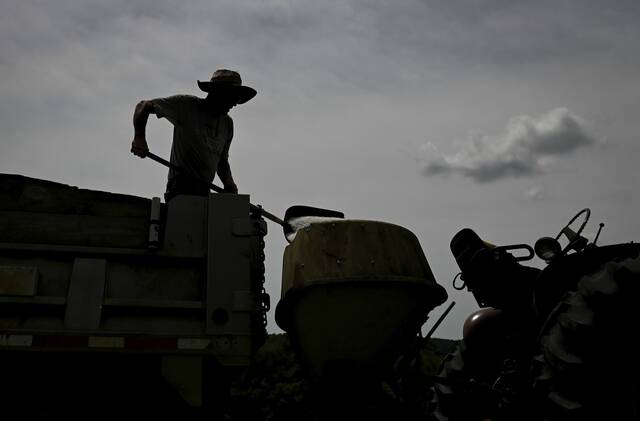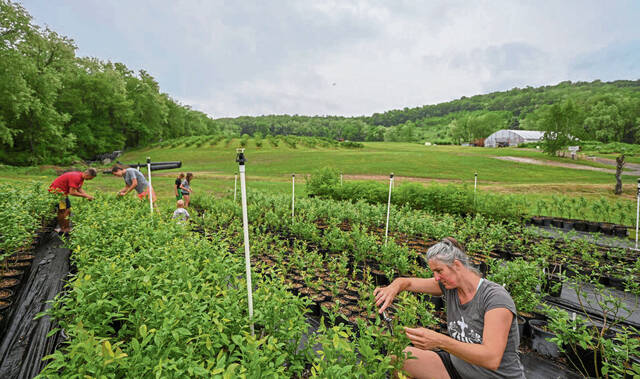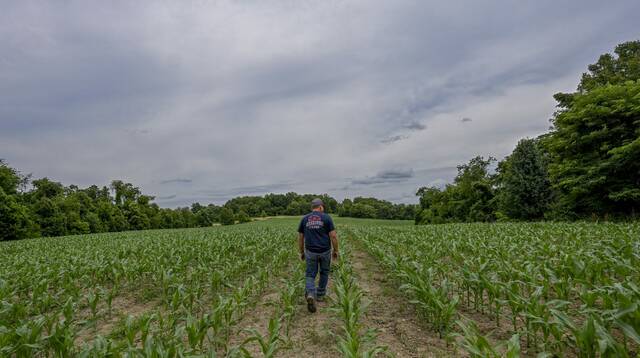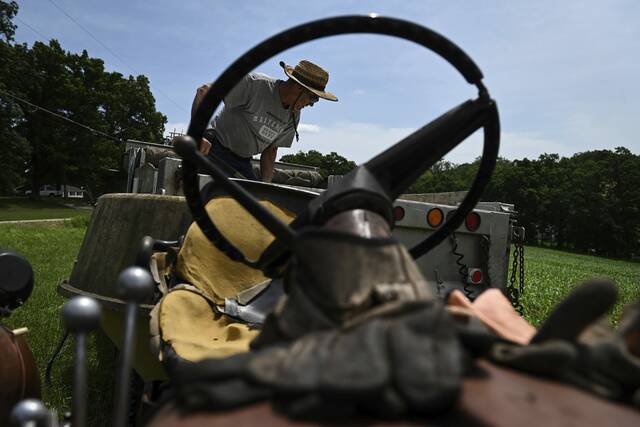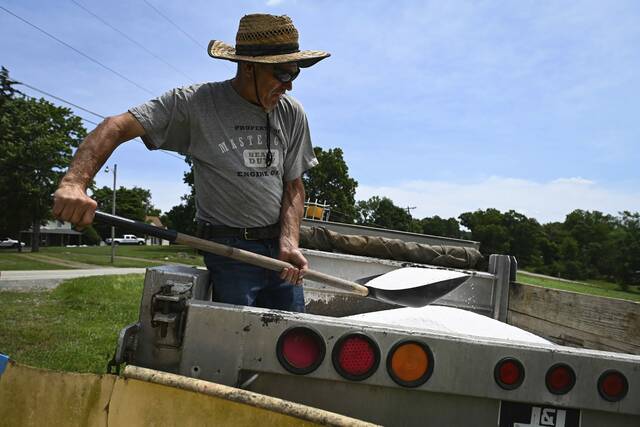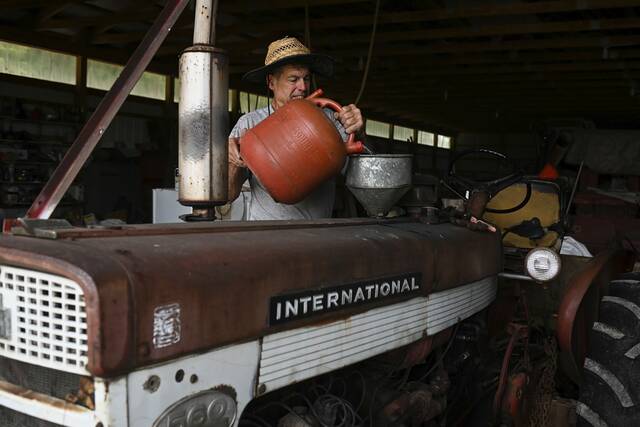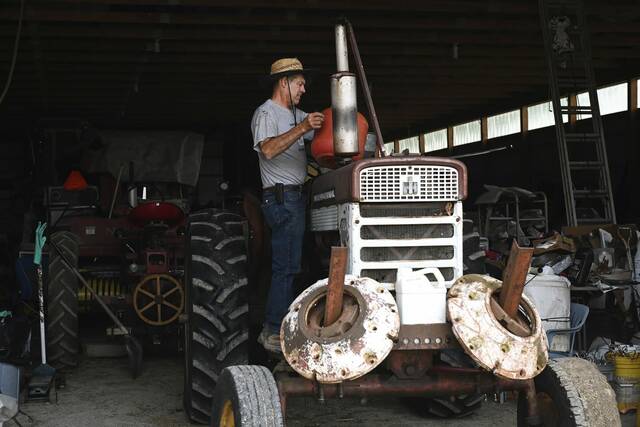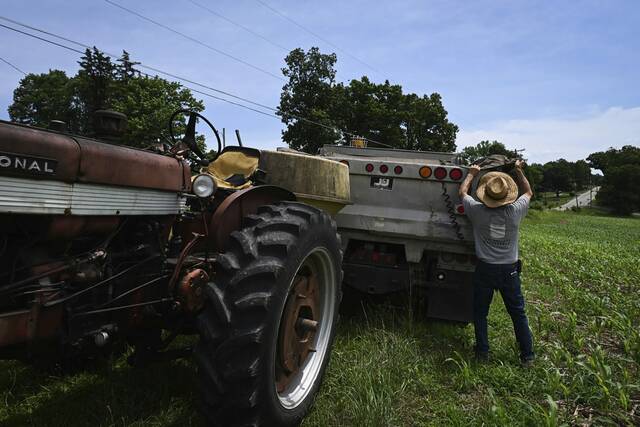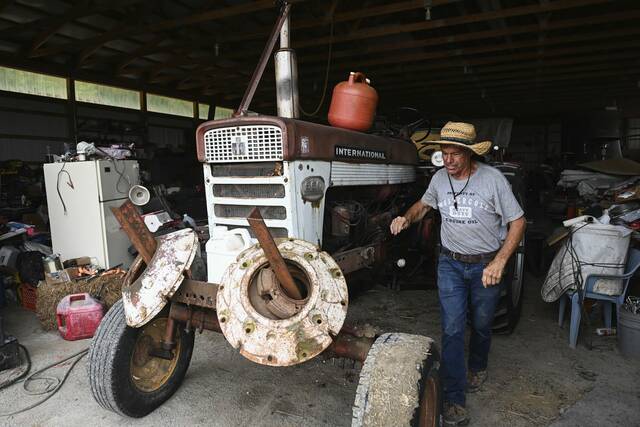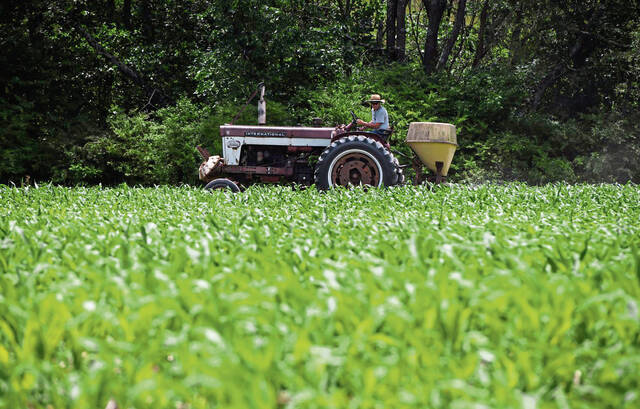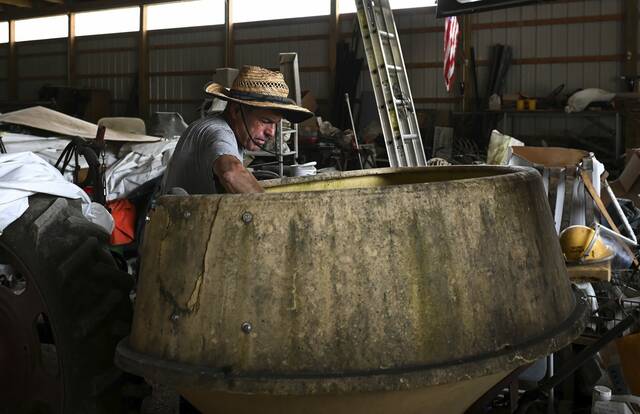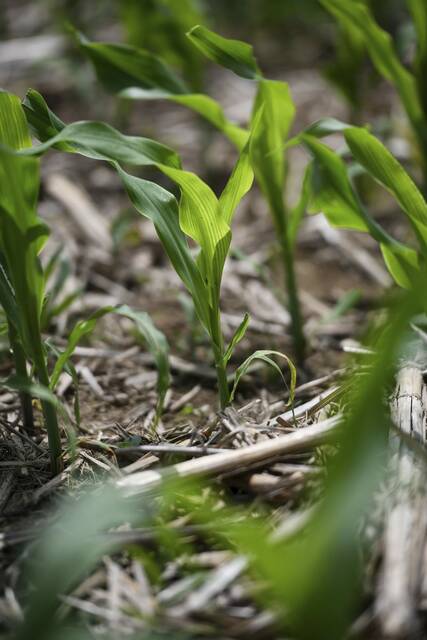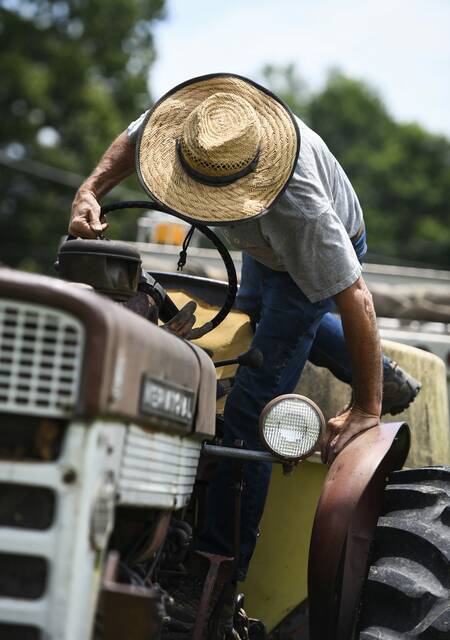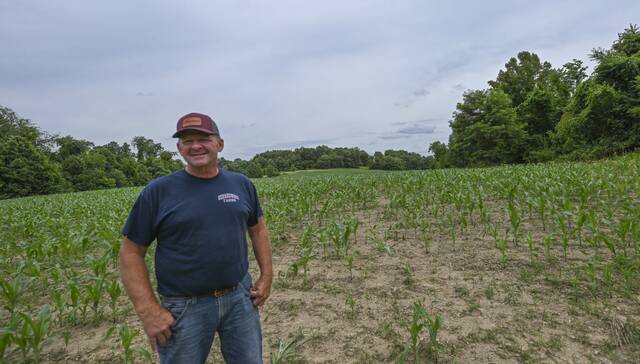Heatwave is good news for some crops, farmers say
At Sacred Gate Farm in Kiski Township, where Lorraine Krezolek and her husband sell pick-your-own blackberries, blueberries, strawberries and more, the only thing the recent heat wave affected was the customer count.
“It’s been really great for us,” Krezolek said. “Last year, we dug a 500,000-gallon pond, and we’ve been able to use that to water twice a day, mostly in the evening. “With the heat and a good water supply, we’re about 10 days ahead of where we’d normally be in the ripening process.”
The blast of blistering heat in Western Pennsylvania may have wilted the spirits of many, but for crops like corn, hay and berries, it was actually a good thing, farmers say.
“The old farmers used to say when it was hot and humid, you could hear the corn growing at night,” said Herb Gearhard, who owns and operates Gearhard Farms in Murrysville.
So daily temperatures topping out near 100 degrees wasn’t bad news at all for Gearhard’s corn fields.
“It was also excellent for hay drying,” he said. “We got a nice week of sun before we had that big rain at the end of the week, although that rain tripled our work trying to get the rest dried.”
The average temperature in June was 72.5 degrees, about the 20th warmest June on record. The all-time average temperature for June, 75.9 degrees, was set in 1934.
“What we’d need to break the record is some more of that heat toward the end of the month,” said Colton Milcarek of the National Weather Service. “We definitely do have a shot at it.”
June temperatures in the Pittsburgh area have held a steady average between 66 degrees and 71 degrees over the past decade, according to the National Weather Service. The hottest average June temperature during that time period was 71.7 degrees in 2005. Even in July, the hottest average monthly temperature over the past quarter-century is 77.3 degrees, in 2020.
Milcarek added that the region has experienced a dry month.
Corn needs about a quarter-inch of water per day to perform at its best, according to Justin Brackenrich, field and forage crop educator for the Penn State Extension in Greene County, which did not see the same sporadic rain that Allegheny and Westmoreland counties received during the heat wave.
“We did experience some negative impacts when it’s that hot,” Brackenrich said. “With our hay crop that we’re mowing and baling, most places in Pennsylvania use a cool-season perennial hay, and most of those slow their growth once the weather gets up above 80 degrees and we stop seeing temperatures below 60 degrees at night. We’ve also had a significant lack of rain here, so for our fields, we’re kind of waiting to see what happens next.”
In Plum, farmer Greg Serakowski grows spelt — a grain used like wheat — corn and soybeans.
Serakowski said the sun is helping his wheat to dry, which means an earlier harvest. He is also preparing to spread nitrogen fertilizer on his corn in the hopes that the forecast for mid-week rain would hold.
“If we don’t get the rain, the nitrogen will evaporate a lot more quickly,” he said.
Vegetable farm challenge
At People’s Farm in Ligonier Township, owner Andrew Williams had a tougher time.
“We have a 3-acre vegetable farm that’s pretty diversified,” Williams said. “It was pretty miserable last week, and it came a little earlier in the season than usual. It caused us some problems because we were still trying to get some plants established. I pretty much took the week off from putting seeds in the ground, because we weren’t having much luck with the heat.”
With so many different types of plants to care for, Williams lost a few things to the heat.
“We’re in this weird little pocket in Ligonier where a lot of the rain breaks either north or south,” he said. “And when you’re more diversified, more things have specific needs.”
Some specialty farms didn’t seem to mind the heat.
At Sacred Gate in Apollo, the Krezoleks also would like to have some regular rain during the summer.
“When we have rain, we don’t have to spend three hours in the evening doing the watering on our own,” she said.
Heat and steady moisture isn’t all good news, though. What’s good for the goose is good for the gander — or in this case, what’s good for the corn is also good for the weeds.
“High humidity and heat also increase weed production,” Gearhard said. “So we’re getting ready to spray some herbicide down so the corn can thrive.”
A changing climate
While the occasional heat wave in Western Pennsylvania is nothing new, payouts from the U.S. Federal Crop Insurance Programs show a sharp increase in the frequency of crops damaged by either drought or excess moisture, according to data from the U.S. Department of Agriculture.
USDA figures for crop insurance payouts between 1990-2022 show roughly $35 billion since 2010 has gone to farmers with crops damaged by too much or too little rain, the two primary causes of crop damage in the region. Drought and high temperature have consistently proven the most damaging, accounting for nearly 44% of total indemnity payments since 2000, according to the USDA.
The Pennsylvania Department of Agriculture’s Climate Action Plan projects climate change will alter growing conditions and the growing season for farmers. In addition, it predicts farm products such as milk could be affected if consistently hotter temperatures cause heat stress in dairy herds.
Patrick Varine is a TribLive reporter covering Delmont, Export and Murrysville. He is a Western Pennsylvania native and joined the Trib in 2010 after working as a reporter and editor with the former Dover Post Co. in Delaware. He can be reached at pvarine@triblive.com.
Remove the ads from your TribLIVE reading experience but still support the journalists who create the content with TribLIVE Ad-Free.

